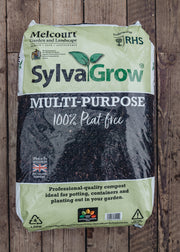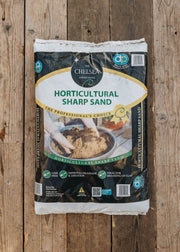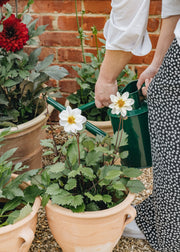Tips for Flood Considerate Gardening
According to the latest figures from the Met Office, the period between October 2022 and March 2024 saw the highest rainfall for any 18-month period since 1836, when data was first collected. The frequency of these extreme weather events means that now, worryingly, one in four English homes is at risk of flooding.
With this in mind, it is now more appropriate than ever that we re-evaluate our approach in the garden, putting a particular emphasis on managing our own, flood-prone space. For this we need to look at ways to manage, absorb, and work around excess water.

Firstly, you will want to give consideration to your soil. Liberally dig through compost and well-rotted manure before planting to improve both the quality and structure of your soil, allowing it to drain more effectively.
When it comes to your lawn, use a long garden fork to aerate it, spiking the fork at regular intervals leaving deep visible holes. For improved drainage, try filling these holes with horticultural sand or grit.
Be sure to give thought to the overall shape and structure of your garden. Minimise impermeable surfaces and look to form slopes and mounds that allow for both runoff and drainage. If you wish to maintain some pathways in your garden, make sure you use either gravel or paving, and avoid using bark mulch as much as possible (it will float!).
Tools for the job
When it comes to planting there are a range of factors to consider. Firstly, and most importantly, if you have a flood-prone garden we recommend that you avoid planting in autumn. Spring planting will see you reap far greater rewards year on year. You will get the benefit of your first summer display, then, come the winter, your plants will be more established and better prepared to withstand the wet conditions. This way you are significantly less likely to see your hard work swamped before you have had a chance to enjoy it.
Perennials for spring planting
Journalist and designer Naomi Slade, whose ‘Flood Resilient’ garden for the 2024 Chelsea Flower Show focused on ‘resilience in a changing climate’, advises that in “wetter ground and more inhospitable condition, larger plants with bigger, stronger root systems will often fare better than smaller varieties”.
She goes on to add that dense planting can also help with flood-proofing. When planted in abundance, plants such as shrubs and trees can significantly slow the passage of water, preventing the soil from becoming too waterlogged too quickly. These plants will also capture water in their canopies, further alleviating the immediate demand on the soil.
Shrubs, trees and evergreens
Sadly, plants such as cherry and plum trees, rosemary and lavender will fare poorly in damp conditions, but this does not mean they cannot feature in a garden that is prone to flooding. Reduce the risk by planting these varieties in raised beds.
Be sure to plant edible plants such as culinary herbs in planters and containers, as this will afford them some protection from potential flood water contaminants.
Lastly, extreme weather is not limited to flooding and may also come in the form of sustained, dry heat. Water butts will collect water during heavy rainfall which will then be ready to use in cases of drought, proving particularly beneficial if there is a hosepipe ban in place. Choosing plants with stronger root systems will also help them defend against dry conditions.































